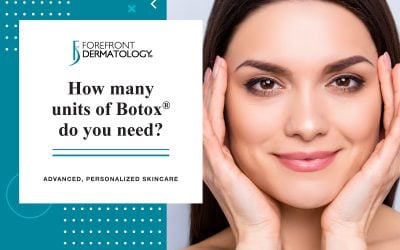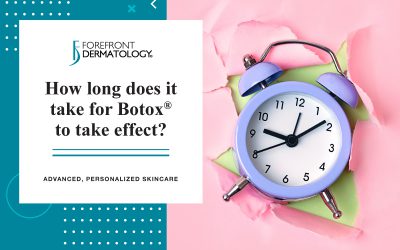
In the world of aesthetics, the pursuit of youthful radiance and flawless skin has led many to explore various cosmetic procedures. Among them, Botox stands out as a popular and effective solution for minimizing the signs of aging.
What is Botox?
Botox, short for Botulinum Toxin, is a neurotoxic protein derived from the bacterium Clostridium botulinum. Though it might sound intimidating, it has proven to be a remarkable aesthetic tool when used in small, controlled amounts. Botox works by temporarily paralyzing or weakening muscles, preventing them from contracting and forming wrinkles.
Botox offers a non-invasive alternative to surgical procedures, allowing individuals to achieve a more youthful look without the need for extensive downtime or recovery. Many individuals begin to notice improvements within a few days, with the full effects manifesting in about one to two weeks. While not permanent, Botox results are long-lasting, typically lasting three to four months.
What are the Botox Treatment Areas?
While most known for treating forehead wrinkles, Botox can actually be injected into a wide variety of areas.
- Forehead Lines: The forehead is a common area where expressive wrinkles form due to repeated facial movements. Botox injected into the forehead muscles relaxes them, smoothing out horizontal lines and creating a more youthful appearance. Results typically become noticeable within a week and can last up to four months.
- Glabellar Lines (Frown Lines): Frown lines, located between the eyebrows, are another prime target for Botox. Botox softens these lines by inhibiting muscle contractions in this area, providing a refreshed and less stressed look. Patients often report increased self-confidence as a result of this simple procedure.
- Crow’s Feet: The delicate skin around the eyes is prone to fine lines known as crow’s feet. Botox injections near the eyes relax the muscles responsible for these wrinkles, diminishing their appearance. Results typically emerge within a week and last for several months, providing a more youthful and vibrant eye area.
- Bunny Lines: Bunny lines, also known as the 11s, are the horizontal or diagonal wrinkles we get on the side of the nose when we smile or scrunch our nose. Botox can be strategically applied to these areas to minimize the appearance of bunny lines, adding a touch of refinement to the overall facial expression.
- Smoker’s Lines: Characterized by vertical lines around the lips, often exacerbated by smoking or repetitive lip movements, smoker’s lines can be softened with Botox. By relaxing the muscles around the mouth, Botox reduces the prominence of these lines, contributing to a smoother, more youthful lip contour.
- Masseter Muscles (Jaw Slimming): Botox can be used to slim the jawline by injecting it into the masseter muscles, which are responsible for chewing. This technique is popular for individuals seeking a more contoured facial appearance, addressing concerns such as teeth grinding and jaw clenching.
- Trapezius Muscles (Neck and Shoulder Relaxation): Botox injections in the trapezius muscles in the neck and shoulders can relieve chronic tension and discomfort. This application particularly benefits individuals experiencing muscle spasms or tension headaches related to these areas.
- Temporalis Muscles (Botox for TMJ): Temporomandibular Joint Disorder (TMJ) can cause jaw pain and discomfort. Botox injections into the temporalis muscles, responsible for jaw movement, can help alleviate symptoms by reducing muscle contractions and providing relief for individuals suffering from TMJ-related issues.
- Hyperhidrosis (Excessive Sweating): Botox is a proven solution for managing hyperhidrosis, a condition characterized by excessive sweating. When injected into the sweat glands, Botox blocks the release of acetylcholine, reducing sweat production and providing relief for those experiencing overactive sweat glands.
- Migraines: Botox has been approved as a preventive treatment for chronic migraines. Injections are administered every 12 weeks around the head and neck to reduce the frequency and severity of migraines. While results may vary, many individuals experience significant relief from the debilitating effects of chronic migraines.
Possible Side Effects
While Botox is generally considered safe when administered by board-certified dermatologists, there are potential side effects to be aware of. These may include temporary bruising, redness, or swelling at the injection site. Rarely, individuals may experience headaches or flu-like symptoms. Choosing a reputable practitioner and communicating openly about any concerns or medical history is crucial to ensure a safe and satisfying experience.
While Botox can effectively reduce fine lines and wrinkles or alleviate symptoms of other conditions, it’s important to do thorough research and consult with a board-certified dermatologist. During a consultation, you can talk with your dermatologist about if Botox is the right choice for you, as well as the benefits and potential risks.
Interested in Botox?
Many Forefront Dermatology and Affiliated Practices offer Botox under the care of board-certified dermatologists. If you are interested, find a location near you today.





